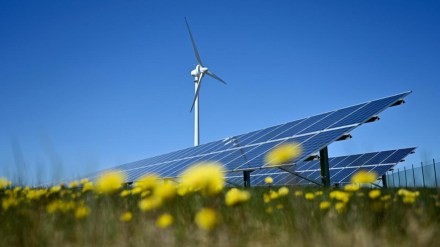By Srivatsan Iyer,
As a developing nation pursuing rapid economic growth, India has made every endeavour to walk the climate talk. This is perhaps best illustrated by the scale at which it has expanded its renewable energy (RE) capacity. The results have been impressive, as can be seen in the numbers. 2024 in particular has been a breakout year where several milestones were reached, as India continued to take large strides enroute Mission 500 gigawatt (Gw) by 2030. During the year, installed RE capacity crossed the 200 Gw landmark, and stood at 214 Gw by November-end, a 14% jump over last year. In November alone, India added 2.3 Gw of new RE capacity, which is four times what was added last November.
The ministry of new and renewable energy’s bidding trajectory of 50 Gw of RE capacity annually till FY28 augurs well for the sector, ensuring there won’t be any slowing of momentum in the near future. The series of milestones achieved so far, in a large part by the private sector, have made this sector more worthy of investment for continued expansion, with a steady inflow of funds from private and public investors.
2025 and beyond: Opportunity
It is essential that we credit the government of India for the RE sector’s robust growth, as it continued to accord top priority to clean energy and reinforced/introduced conducive policy measures. Come 2025, we keenly await the government’s focus on grid modernisation and ramping up transmission connectivity, which is a critical enabler to drive continued RE capacity growth. The need of the hour is simplification and acceleration of processes like signing of power purchase agreements and power sale agreements, and land acquisition to boost investor confidence. We must also continue to advance digital capabilities, focusing on data analytics and artificial intelligence to optimise performance, predict maintenance needs, and maximise performance.
Two growth areas to keep an eye on in the coming year are integration of energy storage solutions with solar and wind power, and the emergence of green hydrogen to support decarbonisation of hard-to-abate sectors. As demand for RE grows, the combination of information technology with battery storage will be essential to ensure reliability and continuous supply of power, as well as allowing for better/higher utilisation of the transmission infrastructure. Green hydrogen and its derivatives are an area where India can realise the tremendous potential it has to emerge as a global champion. Given the government’s focus on this, we can expect major progress in the year ahead.
Significant developments are happening everyday as we speak; and we can expect to see implementation of energy portfolios of complex RE and storage projects, open-access projects, and green hydrogen and its derivatives catering to various commercial and industry segments.
Constraints and challenges: The bigger picture
RE is a highly capital-intensive sector, where the capital is invested upfront, with little to no operating cost over the lifetime of the asset. As such, a continuous flow of affordable funds is needed to keep the wheels of the sector turning. Even as we see capacity ramping up, volatility and uncertainty in interest rates, forex rates, and policy changes across countries that comprise the global supply chain often act as a deterrent and/or lead to higher realised tariffs, as developers include these risks in their project investments and returns.
It will be great to see more innovative financial instruments such as green bonds and RE funds, providing additional avenues for access to affordable funds. We can also look forward to 2025 setting the stage for a more Aatmanirbhar RE sector in India, as the production-linked incentive scheme helps set up a robust domestic manufacturing ecosystem in key solar, wind, battery energy storage system, and hydrogen value chains. This will help derisk the supply chain, minimise supply bottlenecks, lower cost volatility to a degree, and ensure that the speed of capacity growth is not compromised, as we strive to achieve our 2030 target.
The industry and clean energy belong to our future. And for this, a forward-thinking approach should be adopted, not just to adapt to technology trends, but to lead with innovation, ensuring that we can contribute meaningfully to a sustainable, low-carbon future. As the government continues to back this sector, I am sure we will see 2025 scripting another successful story in India’s RE journey.
The author is the Global CEO, Hero Future Energies.
Disclaimer: Views expressed are personal and do not reflect the official position or policy of FinancialExpress.com. Reproducing this content without permission is prohibited.
